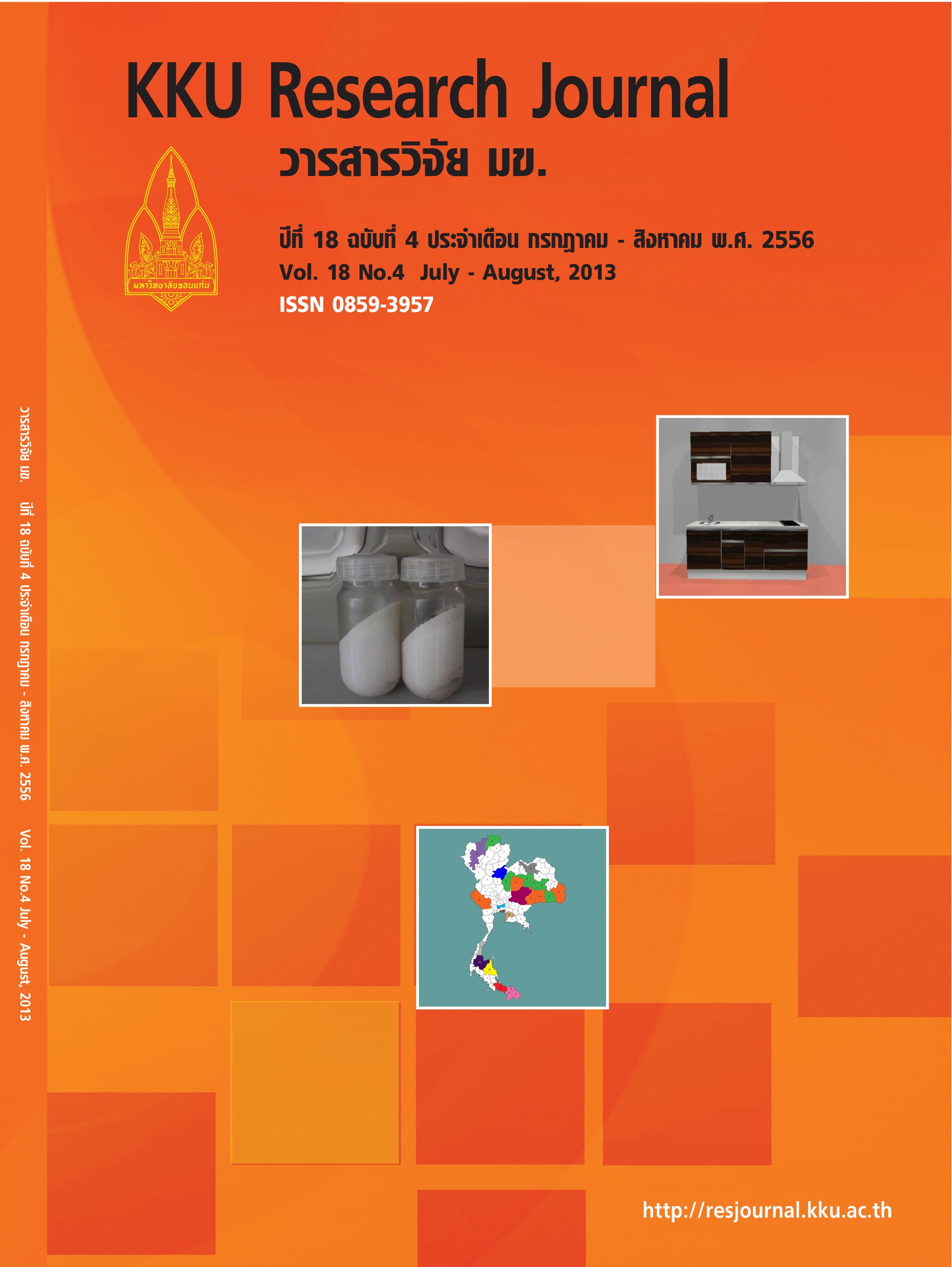A multivariate statistical analysis of crime in provincial level of Thailand
Main Article Content
Abstract
Provincial crime data was analyzed using three multivariate statistical techniques; factor, cluster and discriminant analyses. Factor analysis was utilized to reduce the 25 variables into a fewer set of uncorrelated factors. The factor scores were then used in cluster analysis to find the homogenous provincial group. Subsequently, discriminant analysis was utilized to assess the result of cluster analysis. Factor analysis resulted in six factors and account for 81.3% of the total variance. Cluster analysis clustered the 75 provinces into 15 homogeneous groups. The first cluster, which was the biggest, composed of 49 provinces. The second, third, fourth and fifth clusters composed of 5,6, 2 and 3 provinces, respectively. The remaining ten clusters consisted of only one province including Chon Buri, Chumhon, Chiang Mai, Nakhon Ratchasima, Nakhon Si Thammarat, Phitsanulok, Songkhla, Samut Prakan, Surat Thani and Udon Thani. In discriminant analysis, 74 out of 75 (98.7%) provinces can be correctly predicted in which only Chiang Rai province in cluster 3 was incorrectly assigned to cluster 1.
Article Details
How to Cite
Krongyuth, P., Pattanagul, K., Tongrasit, Y., Chaisiwamongkol, W., Ungpansattawong, S., Naimsanit, R., & Maneesriwongul, A. (2017). A multivariate statistical analysis of crime in provincial level of Thailand. Asia-Pacific Journal of Science and Technology, 18(4), 642–650. retrieved from https://so01.tci-thaijo.org/index.php/APST/article/view/82902
Section
Research Articles


